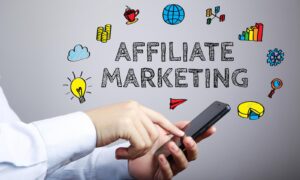When you mention software as a service (SaaS) — or really, any cloud-based company — it’s not uncommon to speak of automation in almost the same breath. It’s one of the core services provided by many SaaS vendors, after all. Often, SaaS bi tools and software equip clients with core competencies they might otherwise lack and streamlines workflows that might otherwise require significant labor.
Curiously, in spite of how closely automation and SaaS are tied together, many businesses fail to leverage it as effectively as they could. As a result, they operate well below peak efficiency. Operations require more time and effort, their growth is less rapid, and they potentially miss out on not only clients but also opportunities to sell.
Consequently, by automating your SaaS business wherever possible, you have the potential to increase its value in a number of ways.
Easier Operations
Occasionally, you may encounter a buyer who’s an expert in your industry and wishes to purchase your SaaS business in order to expand their own footprint. More often, however, you’ll encounter buyers and investors who are interested in either breaking into a new field or turning a profit. The simpler it is to operate your business in the day-to-day, the more attractive a prospect your business is to these buyers.
As you likely know already, clean code and extensive documentation are key to a successful transaction. A buyer should, at a glance, be able to know everything necessary to run your business. The more you’re able to automate general busywork, the easier it will be to onboard a new owner.
At a minimum, you should be looking to automate the following tasks:
- Billing and invoicing. Agents should not be required to contact customers about payment or billing except in rare cases. Your software should automatically notify customers about failed payments, while also regularly verifying payment information for any invalid or expired entries.
- Account retrieval. Customers should not have to communicate directly with tech support in order to regain access to their account or reset a lost password. Instead, this should be handled entirely via automation.
- Logging and reporting. In some cases, a SaaS business will be required to keep logs of certain activities or actions. Rather than relying on internal staff to fill out these reports on their own (and potentially forgetting or making mistakes), logging should be automated wherever possible.
- General maintenance. I’d strongly recommend automating as many server-side tasks as possible, from backups to database management. Again, the more steps you can take to ensure your business runs without requiring intervention, the better.
The goal here is to ensure your SaaS business isn’t reliant on you — or on any of your core staff, for that matter. As noted by SaaS Merger & Acquisition (M&A) expert FE International, the major appeal of a SaaS business, for many, is that it’s both passive and predictable. A buyer will not likely want to shoulder the cost of addressing any talent gaps created by your exit.
Automation helps ensure that they don’t have to. Agencies like Acuto.io offer custom solutions like automation scripts to help you automate click-intensive tasks and streamline your workflow to save you time and resources.
Improved Awareness And Growth
As you well know, the growth rate is one of the core metrics involved in valuing a SaaS business. A business that trends towards regular, consistent growth will likely be valued significantly higher than one that’s stagnating. Similarly, if a business is declining, relatively few investors will have any interest in it.
For growth, you need awareness. For awareness, you need effective marketing. And the most effective marketing you can achieve involves automation.
It’s also worth noting that marketing automation reduces marketing overhead, meaning a lower cost per customer acquisition.
At this point, it’s important to note that in order for you to effectively automate your marketing, you first need to do the necessary groundwork. You need to know your goals, you need to understand how people engage with your software, and you need to figure out how you’ll track your marketing success in each phase. Start with your customer journey.
What stages does a prospective buyer go through before purchasing or subscribing to your software? Brainstorm a few buyer personas, and figure out how each one might move through your sales funnel from interest through to conversion. Consider who might be interested in your software, and why, and go from there.
Next, map out your metrics. You’ll want to have a means of measuring each ‘stage’ of your customer journey. You might, for instance, look at engagement on Facebook, then combine that with new user subscriptions and monthly recurring revenue for a more complete picture.
Finally, figure out what you can automate, and how — marketing and ecommerce expert Mikhail Ledvich gives a few examples:
- Outbound marketing
- Lead nurturing
- Onboarding
- Newsletters and promotions
- Lifecycle campaigns
He further recommends that you pursue marketing automation with an eye for integration with your customer relationship management systems, properly segment your audience, clearly delineate responsibilities, and understand your analytics.
Better Customer Relations
Nearly every SaaS vendor experiences some degree of churn. It is functionally impossible to keep one hundred percent of your subscribers. The only time it becomes problematic is when it begins to approach new signups.
This is another area where automation can be a great help. Implementing it in your sales and billing not only makes things more efficient but also means that staff is spending less time on busywork. And by providing automated self-service options for things like authentication and password resets, you’re empowering customers to address a wide range of frustrations without requiring direct human intervention — and in so doing, significantly improving customer satisfaction.
And the more satisfied your subscribers, the lower your churn.
Closing Thoughts
SaaS and automation go hand-in-hand. By understanding this and leveraging the right tools within your own business, you can potentially streamline operations, reduce costs, and enhance customer acquisition and satisfaction. And that, in turn, can significantly improve the value of your business.
About the Author
“Christopher Moore is the Chief Marketing Officer at Quiet Light, which specializes in helping clients sell their internet-based businesses. Additionally, he founded Gadabout Media LLC to inspire, educate, and unite others by creating visually stunning content for clients.”



































